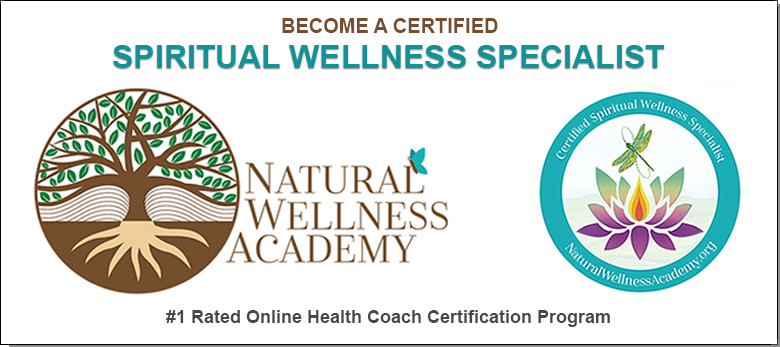
Intuition is often described as a gut feeling or an inner knowing that guides us through life’s many decisions. In the realm of spiritual wellness, intuition plays a vital role in fostering a deeper connection with oneself and the world around us. Here we shed light on the essence of intuition, its benefits, and various methods to enhance this innate ability. By exploring historical perspectives, scientific insights, and practical techniques, we will uncover how to harness the power of intuition for better decision-making, emotional well-being, and personal growth.
Understanding Intuition
Intuition is a fascinating and often misunderstood aspect of human cognition. To appreciate its role in our lives, it’s important to explore its historical context, scientific basis, and how it differs from rational thought.
Historical Perspectives On Intuition
Throughout history, intuition has been recognized and revered by various cultures and traditions. Ancient civilizations, such as the Greeks and Egyptians, believed in the power of inner knowledge. Philosophers like Socrates and Plato discussed intuition as a form of higher understanding, often linked to the soul or the divine.
In Eastern traditions, intuition is considered a vital aspect of spiritual practice. For instance, in Buddhism and Hinduism, meditation and mindfulness are key methods to access deeper intuitive insights. Indigenous cultures worldwide also value intuition, often seeing it as a connection to nature and ancestral wisdom.
Scientific Insights Into Intuition
Modern science has started to explore and validate the existence and function of intuition. Neuroscientific research suggests that intuition is a result of the brain processing information at a subconscious level, drawing on past experiences and knowledge to make quick, often accurate judgments.
Studies have shown that the brain can recognize patterns and predict outcomes without conscious awareness. This ability is linked to the right hemisphere of the brain, which is responsible for creativity, spatial awareness, and holistic thinking. Intuition is thus seen as a form of non-linear processing that complements logical, analytical thought.
Intuition vs. Rational Thought
Understanding the distinction between intuition and rational thought is crucial for integrating both into our decision-making processes. Rational thought is linear, analytical, and relies on conscious reasoning and evidence. It is systematic and often slow, requiring deliberate effort to evaluate information and draw conclusions.
In contrast, intuition is fast, automatic, and holistic. It arises without conscious reasoning and is often felt as a gut reaction or a sudden insight. While rational thought is essential for solving complex problems and verifying facts, intuition excels in situations where quick decisions are needed or when there is incomplete information.
Both intuition and rational thought have their place in our lives. By recognizing and valuing intuition alongside rational thought, we can make more balanced and informed decisions, enriching our personal and spiritual growth [1].
Benefits of Enhancing Intuition
Enhancing intuition offers numerous advantages that can significantly impact various aspects of our lives. By tapping into this innate ability, we can improve our decision-making processes, enhance emotional well-being, and achieve greater self-awareness and personal growth.
Improved Decision Making
One of the most significant benefits of enhanced intuition is the ability to make better decisions. Intuition allows us to quickly assess situations and make choices that align with our deeper values and needs. When faced with complex or ambiguous circumstances, intuition provides a sense of clarity and direction that can be difficult to achieve through rational analysis alone. This ability to “sense” the right path can lead to more effective and confident decision-making in both personal and professional settings.
Enhanced Emotional Well-Being
Intuition also plays a crucial role in emotional well-being. By listening to our inner voice, we become more attuned to our true feelings and desires, allowing us to navigate life’s challenges with greater ease and resilience. This heightened awareness helps us recognize and address emotional issues before they escalate, leading to a more balanced and fulfilling life.
Moreover, trusting our intuition can reduce stress and anxiety. When we rely on our inner guidance, we feel more grounded and secure in our choices, which fosters a sense of peace and contentment. This emotional stability can improve our overall mental health and enhance our relationships with others.
Greater Self-Awareness and Personal Growth
Enhancing intuition can significantly contribute to self-awareness and personal growth. By tuning into our intuitive insights, we gain a deeper understanding of ourselves, our strengths, and our areas for improvement. This self-awareness enables us to make more informed choices that align with our authentic selves and support our long-term goals.
Intuition also encourages personal growth by pushing us to explore new possibilities and step out of our comfort zones. It helps us recognize opportunities for development and inspires us to take bold actions that foster growth and transformation. By embracing our intuition, we can unlock our full potential and lead more purposeful, fulfilling lives [2].

Common Modalities for Developing Intuition
Developing intuition involves engaging in practices that enhance our inner awareness and ability to trust our instincts. Several common modalities can help cultivate this skill, each offering unique benefits and techniques.
Meditation
Meditation is one of the most effective ways to develop intuition. By calming the mind and focusing inward, we create a space where intuitive insights can emerge.
Types of Meditation (Mindfulness, Guided, etc.)
Different types of meditation can be employed to enhance intuition. Mindfulness meditation involves observing thoughts and sensations without judgment, which can heighten awareness of subtle intuitive cues. Guided meditation, on the other hand, uses visualizations and prompts to direct the mind toward intuitive exploration.
Benefits of Meditation for Intuition
Meditation helps to quiet the analytical mind, allowing intuitive thoughts to surface more easily. Regular practice can improve clarity, enhance emotional stability, and increase our ability to tune into our inner guidance.
Journaling
Journaling is a powerful tool for developing intuition. By writing down thoughts and feelings, we can access deeper layers of our subconscious mind.
Techniques for Intuitive Journaling
To enhance intuition through journaling, consider using techniques such as stream-of-consciousness writing, where you write continuously without censoring yourself. This approach can help reveal intuitive insights that might otherwise remain hidden. Another technique is to ask open-ended questions and allow your writing to flow with whatever responses come to mind.
Examples and Prompts
Examples of journaling prompts to stimulate intuition include: “What is my inner guidance trying to tell me?” or “Describe a recent experience where I trusted my gut feeling.” These prompts encourage introspection and help uncover intuitive messages.
Visualization
Visualization involves creating mental images to access intuitive insights. This practice can be particularly effective for those who are visually oriented.
How Visualization Works
Visualization works by engaging the imagination to explore scenarios and possibilities. By vividly picturing outcomes or asking for guidance during visualization, we can tap into intuitive knowledge.
Guided Visualization Practices
Guided visualization practices often include listening to recordings or following scripts that lead you through specific scenarios designed to enhance intuition. These practices can involve visualizing meeting with a wise guide or seeing a symbolic image that represents guidance [3].
Dream Analysis
Dreams can be a rich source of intuitive insights. By analyzing dreams, we can uncover messages from our subconscious mind.
Understanding and Interpreting Dreams
Understanding dreams involves paying attention to recurring themes, symbols, and emotions. Keeping a dream journal can help track patterns and provide clues about intuitive messages.
Techniques for Enhancing Dream Recall
To enhance dream recall, practice setting an intention before sleep to remember your dreams. Upon waking, write down any fragments you recall immediately. This practice strengthens the connection between your conscious and subconscious mind, facilitating intuitive insights.
Specialized Techniques for Unleashing Intuition
Beyond common practices like meditation and journaling, there are specialized techniques that can significantly enhance and unleash your intuition. These methods tap into deeper levels of consciousness and energy, providing profound insights and guidance.
Tarot and Oracle Cards
Tarot and oracle cards are powerful tools for accessing intuitive knowledge. By using these cards, you can gain insights into various aspects of your life and receive guidance from your higher self or spiritual entities.
History and Use of Tarot
The tarot has a rich history dating back to the 15th century. Originally used for playing card games, it evolved into a divination tool in the late 18th century. Tarot cards consist of 78 cards divided into the Major Arcana and Minor Arcana, each with symbolic imagery and meanings that facilitate intuitive interpretation.
How Oracle Cards Differ
Oracle cards are similar to tarot cards but are more varied in structure and themes. They often have fewer cards and focus on specific topics or spiritual messages. Unlike tarot, which has a traditional structure, oracle decks are designed by individual creators, making each deck unique.
Simple Spreads and Practices
Using tarot and oracle cards involves drawing cards and interpreting their meanings. Simple spreads, such as the three-card spread (past, present, future), provide quick insights. Regular practice with these cards can sharpen your intuition and enhance your ability to interpret subtle messages [4].
Energy Healing
Energy healing is a practice that involves channeling healing energy to balance the body, mind, and spirit. It can also open pathways for intuitive insights by clearing blockages and enhancing energetic flow.
Reiki and Intuitive Healing
Reiki is a Japanese energy healing technique that involves the practitioner channeling energy through their hands to the recipient. This practice not only promotes physical and emotional healing but also heightens intuitive awareness. Intuitive healing, on the other hand, is a broader term that includes various methods of sensing and directing energy based on intuitive guidance.
Chakra Balancing for Intuition
Chakra balancing focuses on aligning the body’s energy centers. The third eye chakra, located between the eyebrows, is particularly associated with intuition. Practices such as meditation, crystal healing, and visualization can help balance this chakra, enhancing your intuitive abilities.
Connecting with Spirit Guides
Spirit guides are considered spiritual entities that offer wisdom and guidance. Establishing a connection with them can provide profound insights and support for your intuitive development.
Who Are Spirit Guides?
Spirit guides are believed to be non-physical beings assigned to assist individuals on their spiritual journeys. They can take various forms, including ancestors, angels, or higher beings, and are often perceived through intuition rather than physical senses.
Techniques for Communication
Communicating with spirit guides involves practices such as meditation, automatic writing, and using tools like pendulums or cards. Setting clear intentions and creating a quiet, receptive environment can facilitate this connection. It’s important to approach these practices with an open mind and trust the guidance received.
Integrating Guidance into Daily Life
To integrate guidance from spirit guides into daily life, regularly practice tuning into their messages and applying their insights to your decisions and actions. Keeping a journal of your experiences can help track patterns and validate the guidance received, reinforcing your intuitive trust.
Practical Exercises to Cultivate Intuition
To effectively develop intuition, incorporating practical exercises into your daily routine can make a significant difference. These exercises are designed to enhance your intuitive abilities by fostering a deeper connection with your inner self and the world around you.
Daily Intuition Practices
Establishing daily practices can gradually strengthen your intuitive skills. These practices are simple yet powerful ways to tune into your inner guidance.
Setting Intentions
Start each day by setting an intention to be open to intuitive insights. This can be as simple as stating, “I am open to receiving intuitive guidance today.” This practice primes your mind to be more receptive to intuitive messages throughout the day.
Reflective Practices
Incorporate reflective practices such as mindful walking, spending time in nature, or quiet contemplation. These activities help quiet the mind and create space for intuitive thoughts to emerge. Reflect on your experiences and pay attention to any subtle feelings or insights that arise.
Intuitive Art and Creativity
Engaging in creative activities can unlock intuitive abilities by bypassing the logical mind and tapping into the subconscious.
Using Art as a Medium for Intuition
Art can be a powerful medium for exploring intuition. Whether it’s drawing, painting, or any other form of creative expression, allow yourself to create freely without judgment. The act of creating can reveal intuitive insights and help you connect with your inner self.
Examples and Exercises
Try exercises such as intuitive drawing, where you let your hand move freely on paper without any specific plan or direction. Another exercise is to create a vision board with images and words that resonate with you intuitively. These practices can help you tap into your intuitive mind and express it through art.
Mind-Body Connection
Strengthening the mind-body connection is essential for developing intuition. Practices that integrate physical movement and awareness can enhance your ability to tune into intuitive signals.
Yoga and Intuition
Yoga is a practice that combines physical postures, breathwork, and meditation, making it an excellent tool for enhancing intuition. Certain yoga poses, particularly those that focus on the third eye chakra, can help activate and balance your intuitive abilities.
Somatic Practices
Somatic practices involve paying attention to bodily sensations and movements. Techniques such as body scanning, progressive muscle relaxation, and tai chi can increase your awareness of subtle signals from your body, which are often linked to intuitive insights. Regular practice of these techniques can help you become more attuned to your inner guidance.
References
[1] Intuition: Activating Our Inner Guidance
[2] 7 Ways to Develop Your Inner Guidance System
[3] Let’s get real. The truth about intuition and inner guidance
[4] Connecting to Your Intuition to Enhance Your Life
